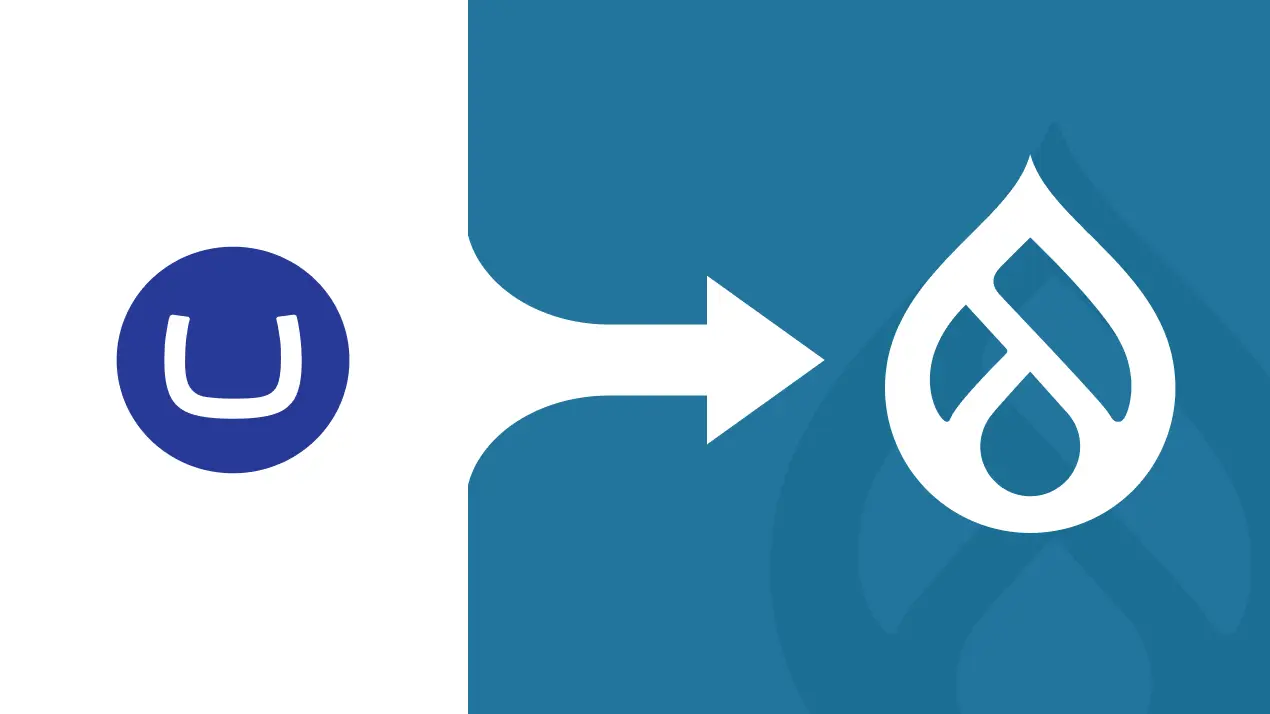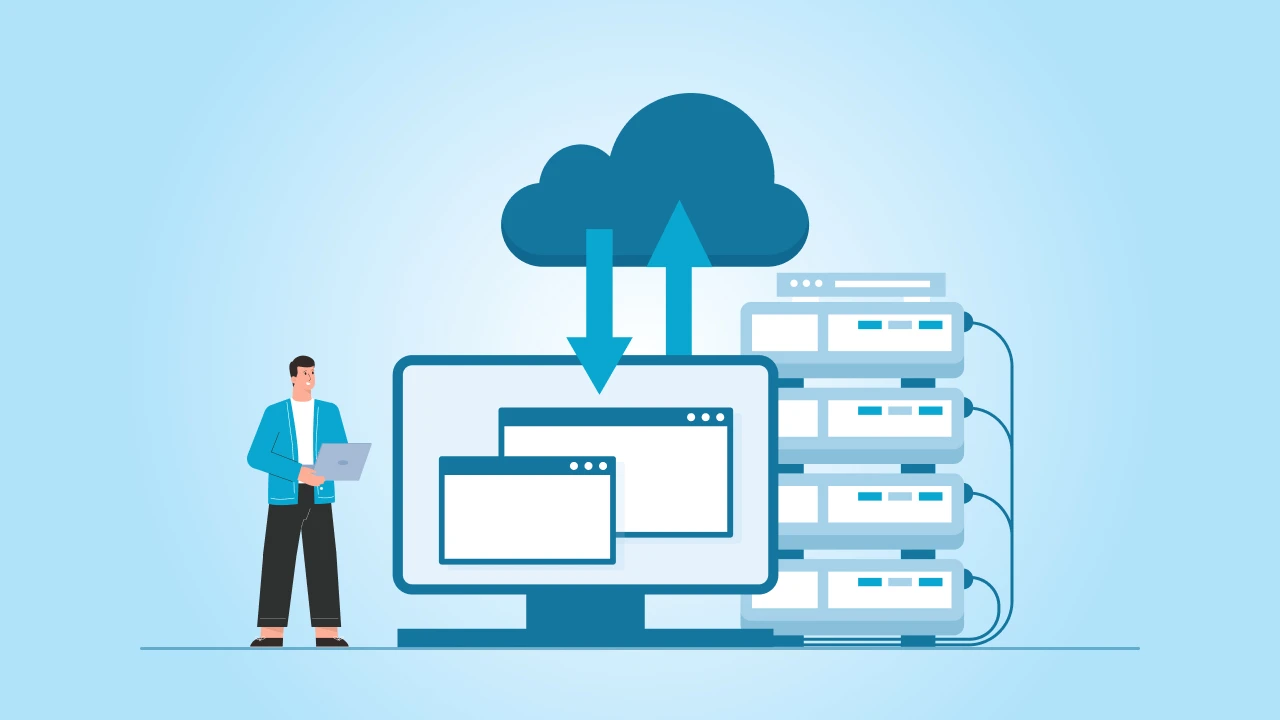If you are still running your website on Umbraco 8, you have likely heard the news: Umbraco 8 reached its end of life (EOL), which means it will no longer receive official support, security patches, or updates.
Yes, you could always upgrade to Umbraco 9—but for many organizations, EOL is also a great excuse to explore other options and pick a platform that’s truly future-proof.
Even though end-of-life announcements can be quite unsettling, sometimes, they act as a pivotal moment in reassessing your website’s needs.
It’s 2025. Whatever content management system (CMS) you choose for your website must be flexible, secure, and supported by a vibrant community to keep up with new technologies, integrations, and user expectations.
That’s why many organizations looking beyond Umbraco 8’s EOL are turning to Drupal, an open—source powerhouse known for its scalability, extensive module ecosystem, and dedicated security team.
This post will explore the top reasons to consider migrating from Umbraco to Drupal, from robust multilingual capabilities to enterprise-level security features.
Plus, by understanding Drupal’s strengths and how they address the challenges that come with Umbraco 8 EOL, as a business owner or entrepreneur, you can make an informed decision.
Top Reasons to Migrate from Umbraco to Drupal
1. A Larger, More Active Open Source Community
One of the biggest advantages of Drupal is its vibrant, global community. While there’s no denying that Umbraco certainly has its own loyal following, Drupal’s reach is simply broader.
From meetups and conferences in major cities around the world to an active online presence (think forums, Slack channels, and dedicated events like DrupalCon), you will find plenty of resources for both support and inspiration.
A bonus of having a large community is the wealth of pre-built modules. Let’s say, you need a custom payment gateway, advanced SEO tools, or even intricate workflow management, chances are someone in the Drupal community has already built—or is actively developing—a module for it.
In contrast, Umbraco tends to offer fewer packages, and updates can be slower. In Drupal, you will likely find a module that covers your needs, and if not, an enthusiastic group of contributors trying to make it happen.
2. Robust Scalability and Flexibility
Drupal often shines when it comes to handling complex, high-traffic websites. In large-scale projects—like government portals or even enterprise-level intranets, Drupal’s architecture is designed to be efficient.
Built-in caching systems, load-balancing capabilities, and a modular approach to features make it much easier to keep performance running smoothly, even when traffic spikes.
Another standout is Drupal’s field-based content modeling system, which offers a level of flexibility that can be harder to replicate in Umbraco. For instance, you can create detailed content types, define relationships, and manage user roles without diving into heavy custom coding.
This makes Drupal a strong choice if you need to accommodate multiple content authors, custom workflows, or advanced user permissions.
3. Enterprise-Level Security
Security is a top priority in Drupal. A dedicated security team works alongside a global network of contributors to identify and fix vulnerabilities quickly. Frequent security advisories, clearly communicated patches, and a well-organized process for handling potential threats all contribute to Drupal’s reputation for being a safe, enterprise-grade platform.
It also helps that governments, universities, and major corporations around the world trust Drupal for their websites. If you are handling sensitive user data or operating in industries with strict compliance standards (like GDPR or ISO), Drupal offers a track record of meeting those requirements head-on.
4. Built-In Multilingual and Globalization Support
If your audience is spread over multiple countries or languages, Drupal’s multilingual features can actually save you a lot of trouble. Out of the box, Drupal lets you seamlessly translate everything from interface labels to content fields with relative ease, and built-in workflows make it straightforward to manage translations over time.
Also, in Umbraco, multilingual capabilities are possible but often require extra work or reliance on external add-ons.
On the other hand, Drupal excels at global site management. You can spin up multiple sub-sites, each in a different language or for a different region, all from a single codebase. This is especially useful if you are working with distributed teams and need everyone on the same CMS platform.
5. Future-proofing with Frequent Updates
Finally, Drupal’s clear release cycles mean you will have a good sense of when the next version is coming and what to expect. Drupal’s core roadmap is pretty transparent, and the community actively prepares for each new release so this helps site owners avoid sudden surprises.
Plus, backward compatibility is often top of mind, so you are less likely to be caught in a situation where you can’t update without a massive overhaul.
Additionally, Drupal’s theming options cater to a wide range of design preferences. Whether you prefer a traditional layout or want to try a headless/decoupled approach, Drupal can handle it.
For instance, Twig, its templating engine, provides a modern framework that makes it easier to maintain a clean separation between the front-end design and the underlying logic—ensuring your site looks great without sacrificing performance.
cmsMinds team is here to guide you through every step—from planning and content auditing to launch and beyond.
Assessing the Migration Readiness
Now, migrating from Umbraco to Drupal can be a huge step, so it’s better to take a close look at your current setup and needs before diving into the actual migration process. Here’s a quick rundown of what to review.
1. Content Audit
You can start by cataloging your existing page types, media assets, metadata, and user roles. Once you have got this list, plan out how each item will transfer into Drupal’s node structure, fields, and roles. Having this sort of clear map of your content will save you headaches later on and help you avoid losing valuable data during the transition.
2. Functionality & Integrations
Next, identify the features your site relies on, such as things like eCommerce, marketing automation, or custom integrations. Then, see what Drupal modules can either replicate or enhance this functionality. The goal here is to make sure you know exactly which modules you will need, so you’re not scrambling for replacements post-migration.
3. Team Expertise and Training
Finally, consider your team’s familiarity with Drupal. While it’s a powerful CMS, it does come with a learning curve. Decide whether you have the in-house knowledge to manage Drupal effectively or if you would benefit from hiring external Drupal experts or scheduling formal training sessions. A little prep now can help you hit the ground running once your new Drupal site goes live.
Crafting an Umbraco to Drupal Migration Plan
1. Planning and Stakeholder Buy-In
Before diving into any technical work, first, make sure everyone in your organization is on the same page—especially decision-makers.
- Define Goals: Are you looking for faster performance, better scalability, specific new features, or stronger security? Clearly outline what success looks like.
- Budget & Timeline: Consider everything from discovery and development to testing and post-launch support. Knowing your financial and time constraints upfront helps you plan realistically.
2. Data Migration Strategy
Moving your content from Umbraco to Drupal is a significant task, so it’s wise to have a solid plan.
- Tools & Modules: Drupal’s built-in Migrate module can handle a lot of the heavy lifting. You might also find pre-built migration scripts or connectors that ease the process for Umbraco users.
- Pilot or Proof of Concept: Test your migration strategy on a smaller environment first. This lets you see how your data maps over, check redirect setups, and evaluate performance without risking your live site.
3. Testing & QA
Once your data is transferred, thorough testing helps ensure there aren’t any surprises post-launch.
- Content Verification: Double-check that all pages, images, and relationships made the move correctly.
- SEO Considerations: Preserve your existing SEO by setting up 301 redirects for old URLs and making sure metadata (titles, descriptions) is intact.
- Performance & Load Testing: Conduct load tests to confirm your new Drupal site can handle expected traffic—and maybe even a bit more, just in case.
4. Launch and Post-Launch Optimization
When you are confident everything works as intended, it’s time to go live.
- Soft Launch: Rolling out changes in stages or using a staging environment helps you catch any last-minute glitches before the masses see them.
- Monitoring & Analytics: Keep tabs on site performance, user behavior, and content engagement. This data will guide future improvements.
- Continual Improvement: One of Drupal’s strengths is how easy it is to keep fine-tuning. As new modules, updates, or features roll out, you will have plenty of opportunities to evolve your site over time.
Lessons to Remember
- Audit Everything: Organizations that skipped a thorough content audit later found mismatched fields, missing assets, or duplicated pages in their new Drupal site. So doing a comprehensive review before migrating will save you a lot of cleanup later.
- Factor in Enough Time: Underestimating the complexity of data mapping and module selection can result in rushed decisions and last-minute scrambling. Remember– A solid, realistic timeline is key.
- Don’t Neglect SEO: Some companies lost search visibility because they forgot about 301 redirects or meta-data during the switch. So take a note to map old URLs to new ones and preserve (or improve) your metadata in Drupal.
Conclusion
By now, it’s clear that Umbraco 8’s end of life doesn’t have to be a huge setback for your website—it can be the perfect catalyst for moving to a more future-proof platform like Drupal. Whether you are looking for robust security, flexible scalability, or just a thriving community that keeps innovating, Drupal has plenty to offer.
The key to a smooth transition is planning: figure out what your site needs, set clear goals, and hiring website migration experts from the start. That way, Drupal’s powerful modules and built-in features can help you build the kind of online presence that Umbraco 8 just couldn’t deliver.
If you are still unable to decide whether to jump to Umbraco 9 or migrate to Drupal, then you can use this moment to think about where you want your business to be a few years from now. So that with the information you collect here, you can decide the path that not only solves your current challenges but also paves the way for your business’s future growth.
Schedule a free consultation with cmsMinds to map out your migration plan and discover how Drupal can elevate your online presence.





